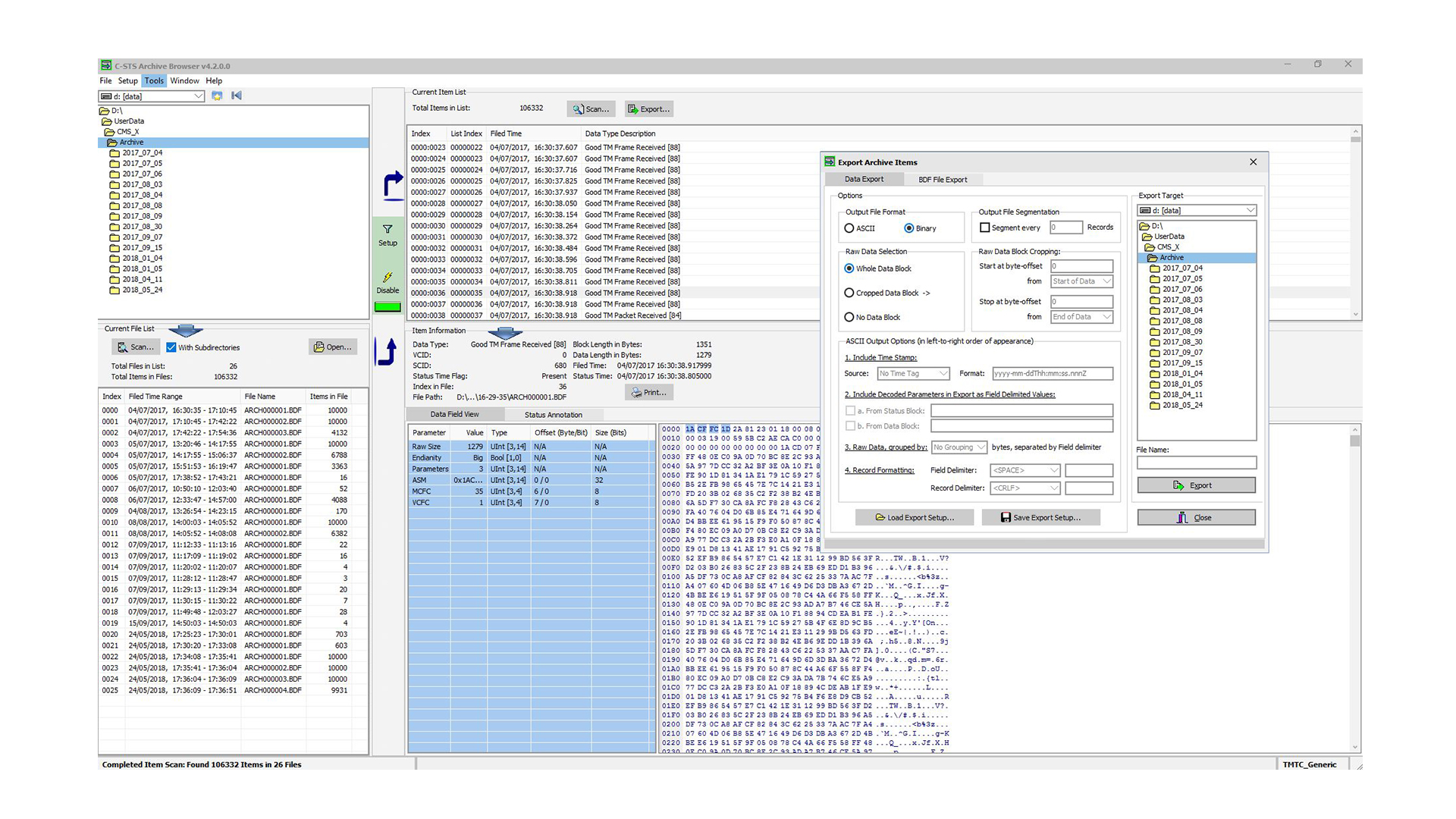In most Celestia STS EGSE systems, data and status information is commonly archived in files on the system’s hard disk (or equivalent). The archiving function of the stores information that passes through (or is generated by) the system. For economy of space and versatility, the Archive format is binary (as opposed to e.g. text-based formats such as System Log files) and includes a wide range of metadata, i.e. status information describing the circumstantial properties of each archived data item (time, source, destination, quality, etc… – as applicable). The Archive format entails a nontrivial data block structure, which makes it difficult to access the information efficiently without the use of custom tools.
Archive Browser
About Archive Browser
The Telemetry Archive File Browser has been designed specifically to enable the searching (browsing), viewing, filtering and exporting of the telemetry data contained in an Archive generated by a Celestia STS EGSE system.

Key Features
- Graphical User Interface
- Advanced Data Filtering functions (e.g. Filter on Time, Data Type, Parameter, and Global Expressions).
- Raw Data Viewer, Parameter location and highlighting
- Parameter calibration (raw value, engineering value)
- ECSS PUS Parameter type awareness for Parameter extraction and decoding (“PTC” and “PFC”)
- Configurable Parameter definition and decoding rules (including Endianity)
- Export functions (binary, ASCII, data, parameters, custom output format)
- Command-line interface for test & analysis automation (e.g. starting Archive Export functions via script)
Equipment Details
The software is a Microsoft Windows application and runs on recent Windows editions. The Archive Browser has no special resource demands. For the purpose of processing large datasets however, performance (speed, capacity) increases with available RAM and CPU capacity. The advised minimum requirements for the host computer are 2 GB of RAM and a modern CPU (e.g. Intel Core i3 or i7).